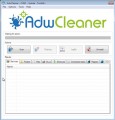The GlobalWeather is an adware (sometimes called ‘ad-supported’ software). If lots of unwanted pop-up ads signed with “Ad by GlobalWeather” or “Powered by GlobalWeather” popping up in your web browser then most probably that your personal computer is infected with this adware. It’s a type of harmful software that designed to display lots of annoying pop-up ads. Unlike viruses, the ad supported software will not delete or infect your files, but its actions will cause some problems with your internet browser. This is because, it’ll infect your machine, get full access to your web browsers like Chrome, FF, MS Edge and Internet Explorer and be able to alter their settings. Of course, it did not ask you for permission and do it secretly as possible. Once your browser settings will be modified, you will be redirected to unwanted ads, some of which can lead to dangerous or misleading web-pages. For this reason, we recommend that you begin the clean up of your computer as quickly as possible and thereby delete GlobalWeather popup ads.
Most often, the adware affects the most common web browsers like the Chrome, Firefox, Microsoft Edge and Internet Explorer. But such the dangerous software as well may infect another web browsers by changing its shortcuts (adding an argument such as ‘http://site.address’ into Target field of a browser’s shortcut). So every time you launch the web browser, it will display an unwanted ad page. Even if you setup a new homepage, an annoying site will be the first thing you see when you launch the Mozilla Firefox, Chrome, IE and Edge.
The ‘ad supported’ software may insert a large amount of advertisements directly to the web sites that you visit, creating a sense that the advertising links has been added by the creators of the web page. Moreover, a legal advertisements may be replaced on the fake advertisements, that will offer to download and install various unnecessary and harmful programs. Moreover, the ad-supported software has the ability to collect tons of personal information about you (your ip address, what is a web page you are viewing now, what you are looking for on the Net, which links you are clicking), which can later transfer to third parties.
We suggest you to get rid of ad supported software and clean your computer from GlobalWeather advertisements as soon as possible, until the presence of the adware has not led to even worse consequences. You need to follow the few simple steps below that will allow you to completely remove Ads by GlobalWeather adware, using only the built-in Windows features and a few of specialized free tools.
How to GlobalWeather pop-up ads get installed onto your PC
Just as the beginning of this article, if you have ever seen the GlobalWeather page appear in your web-browser, it means your computer has been infected with the adware. Most often ‘ad supported’ software is bundled with free software. So, think back, have you ever download and run any free programs? Because most users, in the Setup Wizard, simply press the Next button and don’t read any information like ‘Terms of use’ and ‘Software license’. This leads to the fact that the PC is infected, the web browser’s configured to show a large number of the GlobalWeather annoying ads. Even removing the freeware that contains this adware, the annoying ads does not disappear. Therefore, you must follow the instructions below to clean your computer from the adware and thereby get rid of GlobalWeather advertisements.
How to manually remove GlobalWeather pop-up ads
The following instructions is a step-by-step guide, which will help you manually delete GlobalWeather ads from the Chrome, Firefox, Microsoft Internet Explorer and Microsoft Edge.
- Remove suspicious and unknown programs by using Windows Control Panel
- Disinfect the browser’s shortcuts
- Get rid of GlobalWeather pop-ups from Google Chrome
- Delete GlobalWeather ads from Mozilla Firefox
- Remove GlobalWeather from IE
- Remove unwanted Scheduled Tasks
Remove suspicious and unknown programs by using Windows Control Panel
The best way to begin the machine cleanup is to delete unknown and suspicious programs. Using the Windows Control Panel you can do this quickly and easily. This step, in spite of its simplicity, should not be ignored, because the removing of unneeded programs can clean up your web-browser from pop-up ads, hijackers and so on.
- If you are using Windows 8, 8.1 or 10 then press Windows key, click Search. Type “Control panel”and press Enter.
- If you are using Windows XP, Vista, 7, then press “Start” button and click “Control Panel”.
- It’ll show the Windows Control Panel.
- Click “Uninstall a program” under Programs category.
- You will see a list of all installed programs.
- Scroll through the all list, and remove suspicious and unknown software. To quickly find the latest installed software, we recommend sort programs by date.
See more details in the video instructions below.
Disinfect the browser’s shortcuts
Once the adware is started, it can also alter the web browser’s shortcuts, adding an argument such as “http://site.address” into the Target field. Due to this, every time you open the browser, it will be redirected to an annoying ads.
To clear the web-browser shortcut, right-click to it and select Properties. On the Shortcut tab, locate the Target field. Click inside, you will see a vertical line – arrow pointer, move it (using -> arrow key on your keyboard) to the right as possible. You will see a text that starts with “http://” which has been added here. You need to remove it.
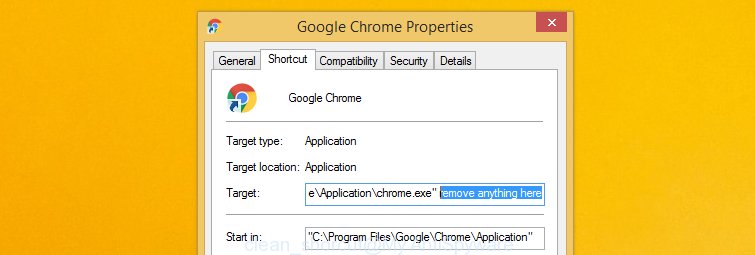
When the argument is removed, click the OK button. You need to clean all shortcuts of all your internet browsers, as they may be infected too.
Get rid of GlobalWeather pop-ups from Google Chrome
Open the Google Chrome menu by clicking on the button in the form of three horizontal stripes (![]() ). It opens the drop-down menu. Next, press the “Settings” option.
). It opens the drop-down menu. Next, press the “Settings” option.

Scroll down to the bottom of the page and click on the “Show advanced settings” link. Now scroll down until the Reset settings section is visible, as shown below and press the “Reset settings” button.
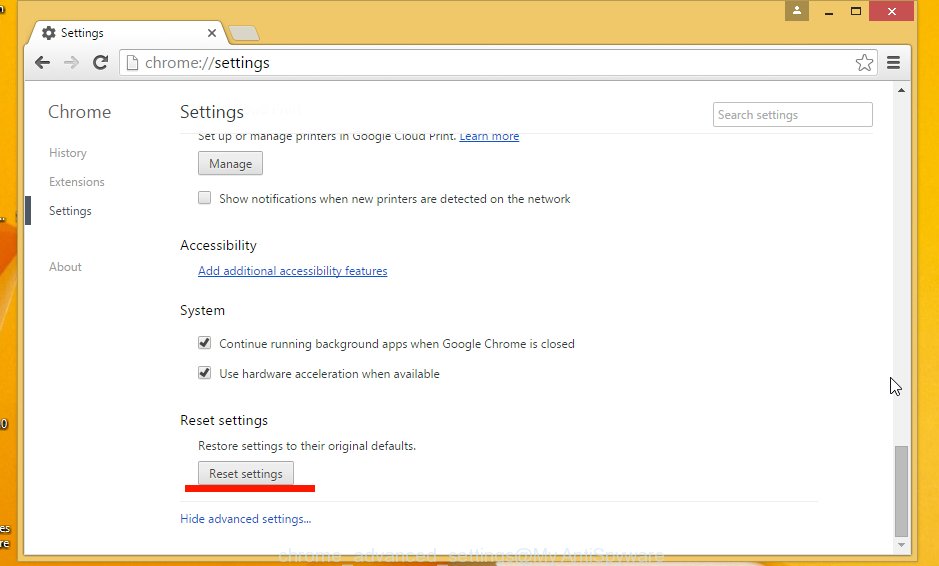
Confirm your action, click the “Reset” button.
Delete GlobalWeather ads from Mozilla Firefox
First, start the Firefox. Next, press the button in the form of three horizontal stripes (![]() ). It will display the drop-down menu. Next, press the “Help” button (
). It will display the drop-down menu. Next, press the “Help” button (![]() ).
).

In the Help menu, click the “Troubleshooting Information”. In the upper-right corner of the “Troubleshooting Information” page, click “Refresh Firefox” button.

Confirm your action, click the “Refresh Firefox”.
Remove GlobalWeather from IE
First, start the Internet Explorer, then click ![]() button. Next, click “Internet Options” as shown on the image below.
button. Next, click “Internet Options” as shown on the image below.

In the “Internet Options” screen select the Advanced tab. Next, click the “Reset” button. The Internet Explorer will open the “Reset Internet Explorer” settings prompt. Select the “Delete personal settings” check box and press Reset button.

You will now need to restart your computer for the changes to take effect. It will restore the Internet Explorer’s settings such as homepage and search engine by default to default state, disable ad-supported internet browser’s extensions and thereby delete ads by GlobalWeather.
Remove unwanted Scheduled Tasks
Once installed, the adware can add a task in to the Windows Task Scheduler Library. Due to this, every time when you launch your PC system, it will open unwanted ad web-page. So, you need to check the Task Scheduler Library and delete all tasks that have been created by adware.
Press Windows and R keys on your keyboard together. It will show a prompt that titled with Run. In the text field, type “taskschd.msc” (without the quotes) and click OK. Task Scheduler window opens. In the left-hand side, click “Task Scheduler Library”, as shown on the image below.
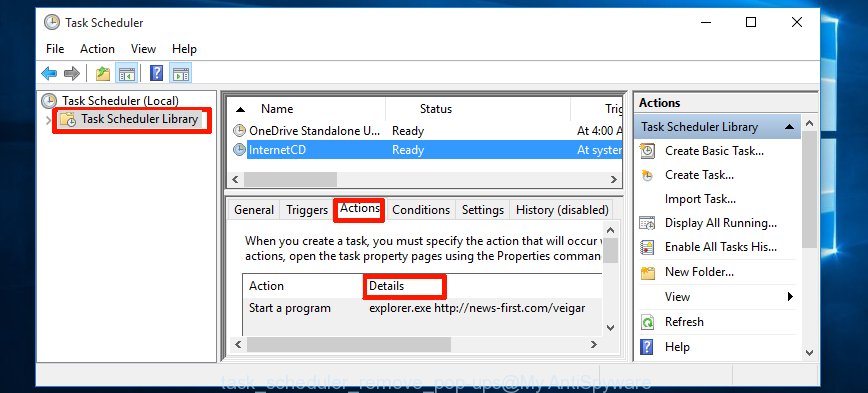
Task scheduler, list of tasks
In the middle part you will see a list of installed tasks. Select the first task, its properties will be display just below automatically. Next, click the Actions tab. Necessary to look at the text which is written under Details. Found something like “explorer.exe http://site.address” or “chrome.exe http://site.address” or “firefox.exe http://site.address”, then you need remove this task. If you are not sure that executes the task, then google it. If it’s a component of the ‘ad-supported’ program, then this task also should be removed.
Further click on it with the right mouse button and select Delete as shown on the image below.

Task scheduler, delete a task
Repeat this step, if you have found a few tasks that have been created by malicious software. Once is done, close the Task Scheduler window.
How to get rid of GlobalWeather pop-ups with free malware remover
Remove GlobalWeather advertisements manually is difficult and often the ad supported software is not completely removed. Therefore, we recommend you to use the Malwarebytes Free which are completely clean your computer. Moreover, the free program will help you to get rid of malware, internet browser hijacker and toolbars that your computer may be infected too.
- Download Malwarebytes from the link below.
Malwarebytes Anti-malware
327734 downloads
Author: Malwarebytes
Category: Security tools
Update: April 15, 2020
- Close all programs and windows on your computer. Open the directory in which you saved it. Double-click on the icon that’s named mb3-setup.
- This will launch the setup of Malwarebytes. Next, click Next button and follow the prompts.
- Once installation is finished, press on the “Scan Now” button . This will start scanning the whole PC system to find out the GlobalWeather adware which redirects your internet browser to the unwanted ad web page. This process can take some time, so please be patient.
- When the system scan is finished, make sure all entries have “checkmark” and click “Quarantine Selected”. Once the disinfection is finished, you may be prompted to reboot your personal computer.
These steps above are shown in detail in the following video guide.
How to stop GlobalWeather and other unwanted ads
To increase your security and protect your computer against new annoying ads and malicious web-pages, you need to use an application that stops access to malicious ads and pages. Moreover, the application can stop the show of intrusive advertising, which also leads to faster loading of sites and reduce the consumption of web traffic.
- Download AdGuard program from the following link.
Adguard download
27037 downloads
Version: 6.4
Author: © Adguard
Category: Security tools
Update: November 15, 2018
- When downloading is finished, start the downloaded file. You will see the “Setup Wizard” window. Follow the prompts.
- Once the installation is finished, press “Skip” to close it and use the default settings, or press “Get Started” to see a quick tutorial which will allow you get to know AdGuard better.
- In most cases, the default settings are enough and you do not need to change anything. Each time, when you start your computer, AdGuard will start automatically and stop pop-up ads, unwanted ads, as well as other malicious or misleading web sites. For an overview of all the features of the program, or to change its settings you can simply double-click on the AdGuard icon, that is located on your Windows desktop.
Remove GlobalWeather ads and malicious extensions with AdwCleaner.
If MalwareBytes cannot get rid of the annoying GlobalWeather ads from the Google Chrome, Microsoft Internet Explorer, Firefox and Microsoft Edge, then we suggests to use the AdwCleaner. AdwCleaner is a free removal tool for ‘ad supported’ software, browser hijackers, PUPs and toolbars.
Download AdwCleaner from the link below.
225791 downloads
Version: 8.4.1
Author: Xplode, MalwareBytes
Category: Security tools
Update: October 5, 2024
After the download is finished, open the directory in which you saved it. Double click the AdwCleaner icon. Once this tool is started, you will see a screen such as below.
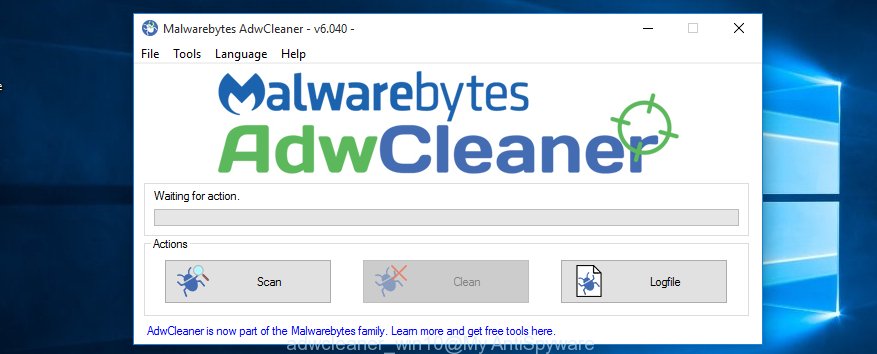
Now, click the “Scan” button . This will begin scanning the whole PC system to find out malicious extensions and the GlobalWeather adware that shows annoying advertisements within your web-browser. Once the scan is finished, it will show a scan report as shown below.
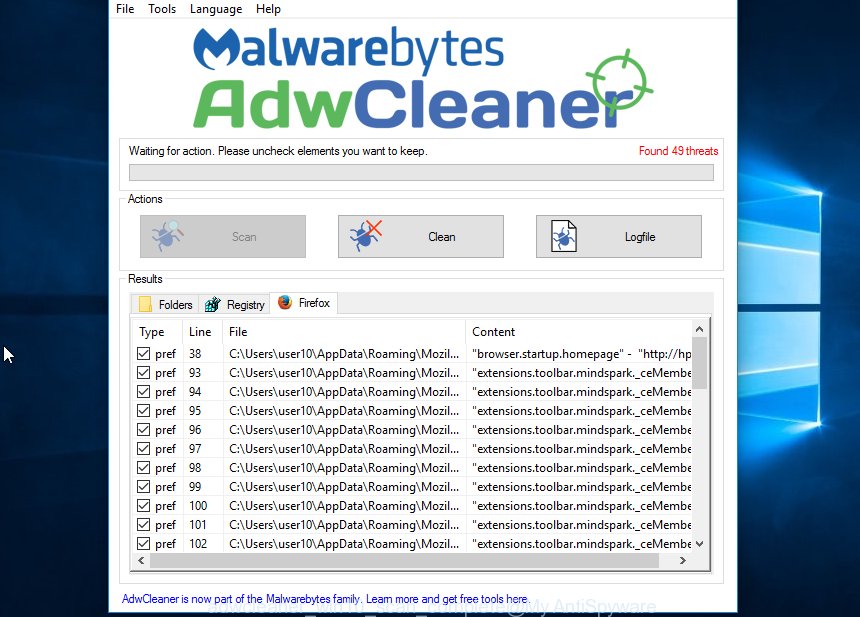
Review the report and then click “Clean” button. It will display a prompt. Click “OK”. When the cleaning procedure is done, AdwCleaner may ask you to reboot your computer.
Look at the following video, which completely explains the procedure of using the AdwCleaner to remove adware, browser hijackers and other malicious applications.
Finish words
Now your system should be free of the GlobalWeather ads. Remove AdwCleaner. We suggest that you keep AdGuard (to help you stop unwanted advertisements and unwanted malicious sites) and Malwarebytes (to periodically scan your machine for new malware and ad supported software). Make sure that you have all the Critical Updates recommended for Windows OS. Without regular updates you WILL NOT be protected when new dangerous applications and ‘ad supported’ software are released.
If you are still having problems while trying to remove Ads by GlobalWeather adware from your personal computer, then ask for help in our Spyware/Malware removal forum.

